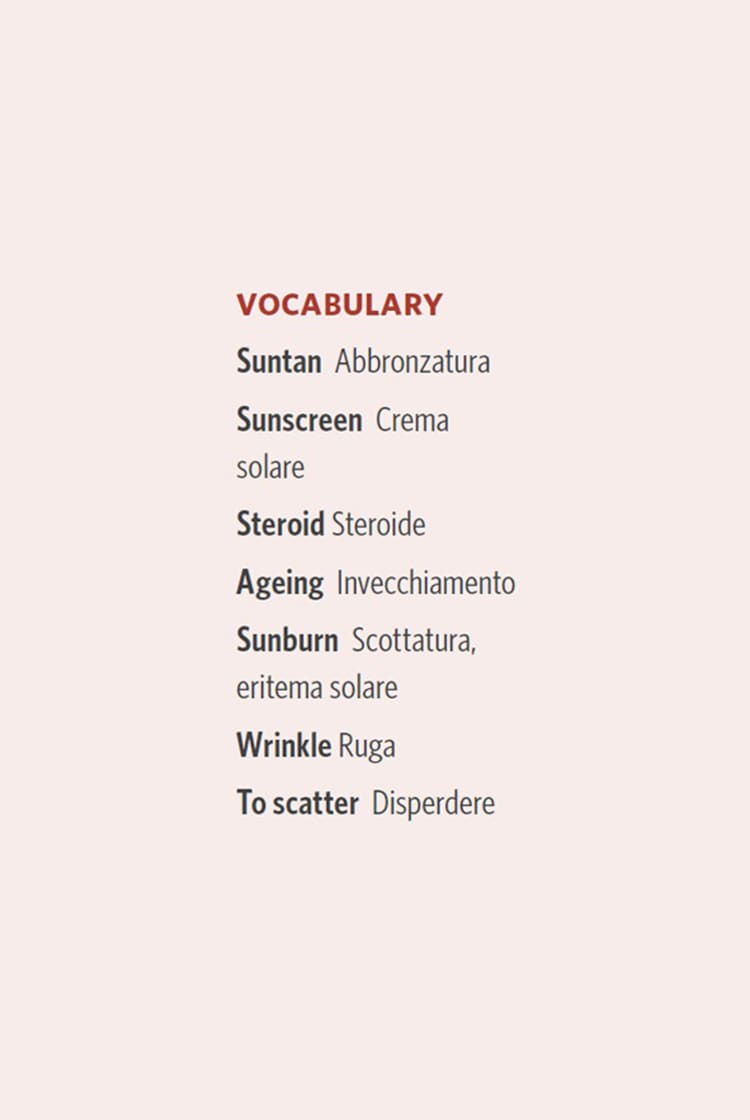As summer approaches, many people will start working on their suntan, trying to lose their winter pallor. But what do we really know about tanning and how does sunscreen work? When we are exposed to the Sun, our skin darkens due to an increase in the production of a pigment called melanin. This pigment is produced to protect the skin by minimising the damaging effects of UV radiation.
Some exposure to sunlight is important to help our body synthesize vitamin D, which plays an important role in maintaining correct calcium levels in the body. Vitamin D is not really a vitamin but rather a family of five fat-soluble steroid compounds, named vitamin D1, D2, D3, D4 and D5. Vitamins D2 and D3 are the most common forms of vitamin D; vitamin D3 is produced in response to skin exposure to UVB light.
We must always be careful about how much time we spend in the sunlight, as exposure to the ultraviolet (UV) rays accelerates the effects of ageing and increases your risk of developing skin cancer. Health experts advise that we should avoid over-exposure to the sunlight and take measures, including covering up with clothing, wearing sunglasses and a hat and, of course, using sunscreen, which reduces the amount of UV radiation that reaches our skin.

The Sun emits a great deal of light in the UV range of the spectrum, which is light with a shorter wavelength than visible light. Some light e.g. UVC, is absorbed by ozone in the atmosphere before it even reaches the Earth’s surface, however, two other kinds of UV light reach the Earth’s surface and it is from them that sunscreen protects us. The largest proportion of UV radiation that penetrates the ozone layer is in the UVA range (around 95%), while the remaining 5% is in the UVB range. Both UVA and UVB can cause skin damage. UVB triggers the production of both vitamin D3 and melanin, but it can also cause sunburn and direct DNA damage, increasing the risk of developing skin cancer. UVA can penetrate the skin deeper than UVB, causing wrinkles and premature ageing; it too can cause DNA damage and contribute to an increased skin cancer risk.
To protect the skin from sunlight damage, ancient Greeks used olive oil; ancient Egyptians used rice extracts, jasmine and a variety of plants. The first synthetic sunscreens were only produced in the 20th century. Sunscreens comprise a combination of inorganic and organic chemicals: titanium dioxide and zinc oxide are the main inorganic compounds; the latter has been used for skin protection for thousands of years. The active ingredients in sunscreen reduce exposure to UV light in two ways; they reflect or scatter light away so that it does not reach the skin at all, or, some organic chemicals act by absorbing photons of UV light, dissipating the energy harmlessly as heat. Sunscreen must be reapplied because some organic chemical components are not photostable and gradually become degraded upon exposure to UV light.
Often people look for sunscreen with a high SPF that offers maximum protection, however SPF is only a measure of UVB rays and does not indicate protection from UVA rays. Specifically, SPF indicates how long it takes for UVB light to redden skin in the presence of sunscreen, in comparison to unprotected skin e.g. SPF 30 means that it would take 30 times longer. Therefore, this summer while you are enjoying the sunlight remember to keep applying sunscreen, and to use one that blocks both UVA and UVB rays.



